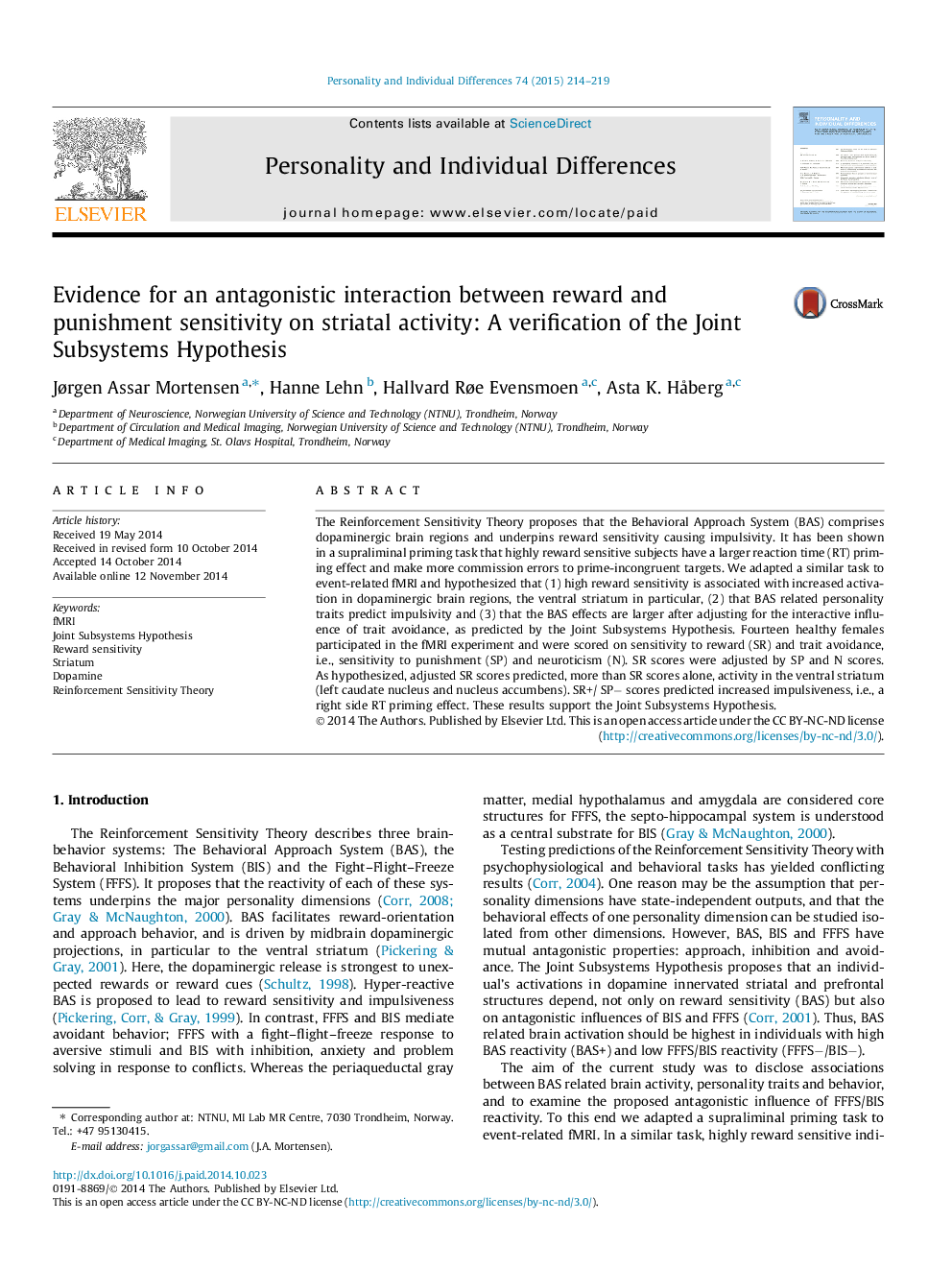| کد مقاله | کد نشریه | سال انتشار | مقاله انگلیسی | نسخه تمام متن |
|---|---|---|---|---|
| 7252007 | 1472044 | 2015 | 6 صفحه PDF | دانلود رایگان |
عنوان انگلیسی مقاله ISI
Evidence for an antagonistic interaction between reward and punishment sensitivity on striatal activity: A verification of the Joint Subsystems Hypothesis
ترجمه فارسی عنوان
شواهد برای یک تعامل متقابل بین پاداش و حساسیت مجازات در فعالیت های جنجالی: تأیید فرضیه مشترک سیستم های
دانلود مقاله + سفارش ترجمه
دانلود مقاله ISI انگلیسی
رایگان برای ایرانیان
کلمات کلیدی
موضوعات مرتبط
علوم زیستی و بیوفناوری
علم عصب شناسی
علوم اعصاب رفتاری
چکیده انگلیسی
The Reinforcement Sensitivity Theory proposes that the Behavioral Approach System (BAS) comprises dopaminergic brain regions and underpins reward sensitivity causing impulsivity. It has been shown in a supraliminal priming task that highly reward sensitive subjects have a larger reaction time (RT) priming effect and make more commission errors to prime-incongruent targets. We adapted a similar task to event-related fMRI and hypothesized that (1) high reward sensitivity is associated with increased activation in dopaminergic brain regions, the ventral striatum in particular, (2) that BAS related personality traits predict impulsivity and (3) that the BAS effects are larger after adjusting for the interactive influence of trait avoidance, as predicted by the Joint Subsystems Hypothesis. Fourteen healthy females participated in the fMRI experiment and were scored on sensitivity to reward (SR) and trait avoidance, i.e., sensitivity to punishment (SP) and neuroticism (N). SR scores were adjusted by SP and N scores. As hypothesized, adjusted SR scores predicted, more than SR scores alone, activity in the ventral striatum (left caudate nucleus and nucleus accumbens). SR+/ SPâ scores predicted increased impulsiveness, i.e., a right side RT priming effect. These results support the Joint Subsystems Hypothesis.
ناشر
Database: Elsevier - ScienceDirect (ساینس دایرکت)
Journal: Personality and Individual Differences - Volume 74, February 2015, Pages 214-219
Journal: Personality and Individual Differences - Volume 74, February 2015, Pages 214-219
نویسندگان
Jørgen Assar Mortensen, Hanne Lehn, Hallvard Røe Evensmoen, Asta K. Håberg,
